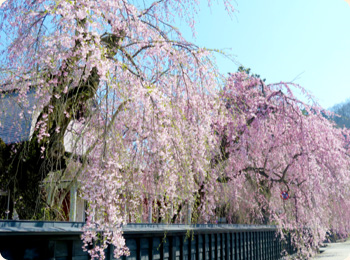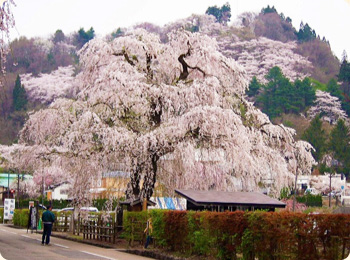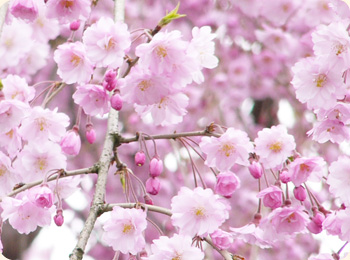
Shidarezakura that beautifully decorate samurai residences
It dates back to the feudal era, about 360 years ago.
When the wife of Yoshiaki, the second head of the Kakunodate Satake clan, got married, she brought three cherry tree saplings with her from the Sanjo Nishi family home in Kyoto.
It is said that this tradition was passed down over the years and eventually became the "Kakunodate Weeping Shidarezakura" that remains to this day.



